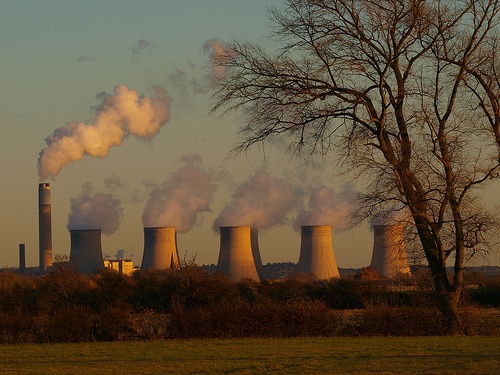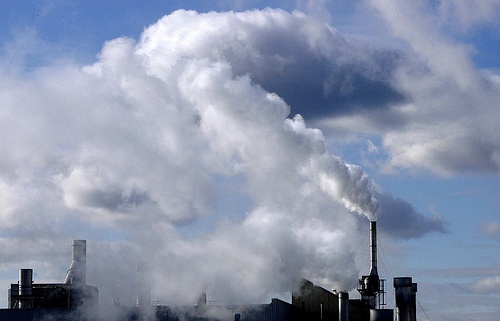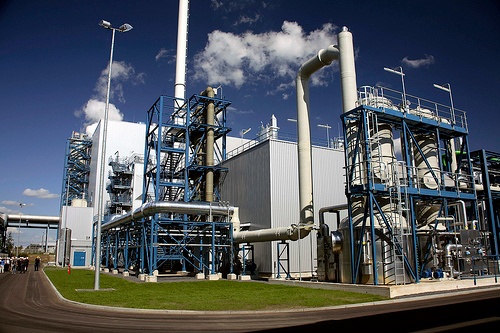The Trump-era Environmental Protection Agency (EPA) has proposed to repeal and replace another of the Obama-era EPA’s signature efforts to reduce greenhouse gas (GHG) emissions. EPA has now proposed an “Affordable Clean Energy Rule”, to replace the “Clean Energy Plan” adopted in 2015 but stayed by litigation. The new rule softens the mandates in the earlier rule, and offers states more flexibility to design their own efforts to control greenhouse gas (GHG) emissions from existing fossil fuel-fired electricity generating units (EGUs) by eliminating Clean Power Plan requirements that states consider operational changes “outside the fenceline” of the regulated EGUs.
Read MoreAudit, Compliance and Risk Blog
EPA Proposes To Replace Obama-Era Rules For Coal Fired Power Plants
Posted by Jon Elliott on Tue, Oct 16, 2018
Tags: Environmental risks, Environmental, EPA, Greenhouse Gas, ghg
California Returns Statewide Greenhouse Gas Emissions to 1990 Levels
Posted by Jon Elliott on Tue, Sep 04, 2018
California is one of many jurisdictions around the planet attempting to reduce greenhouse gas (GHG) emissions to 1990 levels. Globally, this goal appears in the United Nations Framework Convention on Climate Change (UNFCCC) – signed in 1992 when the 1990 goal translated roughly into a goal to keep GHG emissions flat. California adopted its own 1990 goal in “AB 32” legislation enacted in 2006, by which time annual statewide emissions had increased significantly, and when business-as-usual emissions growth was projected to continue. As later quantified by the California Air Resources Board (ARB), AB 32 amounted to a commitment to reverse the state’s path, reducing GHG emissions by 15% instead of allowing them to rise by 15%. In July, ARB announced that the state has reached this 2020 goal, two years early.
Read MoreTags: California Legislation, Environmental risks, Environmental, Greenhouse Gas, ghg
Feds Formally Propose to Roll Back Future Auto Emission Standards
Posted by Jon Elliott on Tue, Aug 21, 2018
 The Trump Administration has taken the next step toward rolling back automobile standards intended to reduce greenhouse gas (GHG) emissions. On August 2, the Environmental Protection Agency (EPA) and the National Highway Traffic Safety Administration (NHTSA) issued a joint proposal to replace emission standards previously adopted to tighten emission standards during model years 2021-2026, captioned the “Safer Affordable Fuel-Efficient (SAFE) Vehicles Rule for Model Years 2021-2026 Passenger Cars and Light Trucks.” The agencies present a formal proposal to extend existing emission standards through those years, but also seek comments on several variations on this proposal.
The Trump Administration has taken the next step toward rolling back automobile standards intended to reduce greenhouse gas (GHG) emissions. On August 2, the Environmental Protection Agency (EPA) and the National Highway Traffic Safety Administration (NHTSA) issued a joint proposal to replace emission standards previously adopted to tighten emission standards during model years 2021-2026, captioned the “Safer Affordable Fuel-Efficient (SAFE) Vehicles Rule for Model Years 2021-2026 Passenger Cars and Light Trucks.” The agencies present a formal proposal to extend existing emission standards through those years, but also seek comments on several variations on this proposal.
Tags: Environmental risks, Environmental, EHS, EPA, Greenhouse Gas, ghg, CAA, Transportation
EPA Proposes to Rescind Last Administration’s Long-Delayed Accidental Release Prevention Revisions
Posted by Jon Elliott on Tue, Jul 17, 2018
In the last week before President Obama left office, the Environmental Protection Agency (EPA) completed a multi-year review of its Accidental Release Prevention (ARP) program for toxic catastrophe prevention, and adopted significant expansions of ARP requirements (I wrote about them here). EPA proposed ARP revisions in March 2016 (I blogged about them here). Then, when President Trump took office, EPA reversed course, repeatedly deferring the effective date of those revisions while the agency reviewed them. In May 2018 EPA completed its review, and published a proposal in the Federal Register to rescind almost all these expansions and return ARP requirement to those in place before 2017. EPA also included an alternative proposal that retained a few more elements, and requested public comment on both versions no later than July 30, 2018.
Read MoreTags: OSHA, Environmental risks, Environmental, EPA, Greenhouse Gas, ghg, Hazcom, effluent, mact
EPA Promulgates “Back-to-Basics” Process for Reviewing Air Quality Standards
Posted by Jon Elliott on Tue, Jun 26, 2018
On May 9, Environmental Protection Agency (EPA) Administrator Chris Pruitt issued a policy memo recasting his agency’s basic approach to review and revision of national ambient air quality standards (NAAQSs) – EPA’s broadest and most basic targets for national pollution levels. He entitles it a “Back-to-Basics” Process for Reviewing [NAAQSs]”, echoing the phrase he used last year to recalibrate the agency’s relationships with the public and its various stakeholders. (I blogged about this general policy here).
Read MoreTags: Environmental risks, Environmental, Greenhouse Gas, ghg, CAA, mact
EPA Decides to Revise 2022-2025 Automobile GHG Emission Standards
Posted by Jon Elliott on Tue, May 22, 2018
On April 2, the US Environmental Protection Agency (EPA) announced that it has completed its “midterm evaluation” of greenhouse gas (GHG) emissions standards for cars and light trucks for model years 2022-2025, has decided to withdraw standards agreed to between the Obama Administration and California during 2016, and will conduct additional rulemaking to consider less stringent standards. This review began in March 2017, soon after President Trump appointed Scott Pruitt as EPA administrator with a mandate to reduce regulation. California, which has special authority under the federal Clean Air Act (CAA), is leading a coalition of states that has already sued to stop the change. In response to this push-back, President Trump has ordered federal agencies to negotiate with California to seek a compromise.
Read MoreTags: Environmental risks, Environmental, EPA, Greenhouse Gas, ghg
EPA Withdraws “Once in Always in” Policy For Major Air Toxics Sources
Posted by Jon Elliott on Tue, Mar 06, 2018
The Clean Air Act (CAA) directs the Environmental Protection Agency (EPA) to define “hazardous air pollutants (HAPs)” that may pose acute health hazards, and to impose regulations to reduce those hazards. Controls include permits for “major sources” of HAPs based on “Maximum Achievable Control Technologies (MACT),” and lesser controls for non-major “area sources.” Since 1995, EPA policy has been that every emission source that met major source criteria at the time a MACT became effective is “once in, always in” and cannot requalify as a less-regulated area source even if it accepts legally binding controls that reduce its “potential to emit.” On January 25, 2018 EPA reversed that decades-old policy.
Read MoreTags: Environmental risks, Environmental, EPA, Greenhouse Gas, ghg, climate change, CAA, mact
California Adopts Plan for Greenhouse Gas Controls Through 2030
Posted by Jon Elliott on Tue, Feb 27, 2018
Since enacting AB 32 in 2006, California has pursued aggressive policies to reduce statewide greenhouse gas (GHG) emissions. Primary responsibilities are assigned to the California Air Resources Board (ARB), although other state agencies implement complementary policies within their areas of special jurisdiction. In addition to emissions control regulations, state law assigns ARB to develop a Scoping Plan that identifies the state’s strategic goals, and compiles the many tactical approaches through individual regulatory and incentive programs. ARB issued the first Scoping Plan in 2008, with an update in 2014 and the latest update in 2017. The rest of this note describes changes in the latest Scoping Plan to reflect the state’s ever-expanding GHG reduction goals.
Read MoreTags: Health & Safety, California Legislation, Environmental risks, Environmental, Greenhouse Gas, ghg
Regional Greenhouse Gas Initiative Extends Efforts Until 2030
Posted by Jon Elliott on Tue, Feb 13, 2018
One of the longest running sub-national greenhouse gas (GHG) control efforts in the U.S. has been the Regional Greenhouse Gas Initiative (RGGI) program. RGGI provides a cap-and-trade program covering GHG emissions from targeted fossil fuel power plants in participating northeastern states. The program t has just been revised and extended through 2030.
Read MoreTags: Environmental risks, Environmental, Greenhouse Gas, ghg, cap-and-trade
Businesses Using “Science-Based Targets” to Reduce Greenhouse Gas Emissions
Posted by Jon Elliott on Thu, Oct 26, 2017
The Paris Agreement anticipated that sub-national governments and private organizations would contribute to global progress, by meeting and often exceeding national requirements (I wrote about formal United Nations programmatic expectations here).
One of the non-governmental efforts is the Science Based Targets Initiative, through which individual companies can set GHG-reduction goals. At latest report, over 300 companies participate.
What is the Science Based Targets Initiative?
The Initiative is a multi-sector collaboration among the following international organizations: CDP (formerly called the Carbon Disclosure Project), World Resources Institute (WRI), the World Wide Fund for Nature (WWF; formerly World Wildlife Fund), and the United Nations Global Compact (UNGC). Participation in the Initiative is also identified as one of the commitments under the We Mean Business Coalition, which is another international business initiative. The Initiative defines “science-based targets” by reference to the Initiative’s effort to support the 2o C target (which the Initiative refers to as the “2°C pathway”):
Read MoreTags: Health & Safety, Environmental risks, Environmental, EPA, Greenhouse Gas, ghg, climate change









